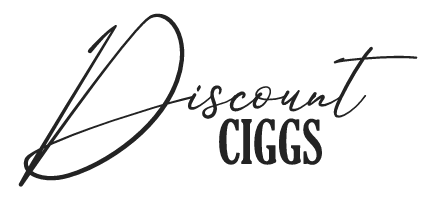Smoking and Social Hierarchies
The mystique of a gentle wisp of smoke! From classic Hollywood reels to modern urban landscapes, smoking has frequently been pivotal in shaping cultural and societal benchmarks. Beyond the visual, have you ever pondered the tales that each smoke puff tells?
The Historical Context of Tobacco
From the moment one thinks of tobacco, it's easy to fixate on its more immediate associations: nicotine, addiction, or the wisps of smoke curling upwards. However, this plant, with its controversial reputation, has a tale that is intertwined with the tapestry of human civilization. It's not merely about consumption or addiction. Rather, tobacco's story is a multi-layered narrative that underscores its immense influence on the evolution of societies.
Delve deeper into history, and you'll find tobacco being exchanged as a currency, revered in rituals, and even held as a symbol of affluence. Its impact on economies can't be understated. Entire empires grew wealthy due to the trade of this single commodity. Plantations sprawled across vast lands, becoming the backbone of economies, and influencing geopolitical relations. Wars were waged, treaties were signed, and colonial empires expanded, with tobacco often at the heart of these historical events. It became more than just a plant; it was a tool of power, diplomacy, and economic prowess.
Then there's the sociological aspect of tobacco. Cultures around the world embedded tobacco into their rituals and ceremonies. For some, it was a bridge to the divine, a way to connect with ancestors, or even a means to broker peace among warring factions. In more recent history, it evolved into a status symbol, with societal elites showcasing it as a mark of distinction. Over time, its role in society has seen dramatic shifts, echoing the changing attitudes and values of the people. From reverence to disdain, tobacco's journey is a reflection of human history in its myriad shades.
The cigarette as a status symbol in various societies
Venture back through history, and you'd find a distinct period where the initial spirals of smoke emerging from a tobacco pipe carried with them more than just the scent of burned leaves. They were laden with implications, interpretations, and, most importantly, status. This wasn't merely about inhaling smoke; it was about exuding a certain prestige. Believe it or not, there was an epoch when the act of smoking wasn't just a common habit but rather an emblem of luxury, sophistication, and exclusivity.
Now, consider the transformation of this symbol. As centuries rolled by, the sheer act of lighting up cigarette smoke or puffing a pipe began signifying different things in diverse societies. In some cultures, it was the rich and powerful who embraced this habit, turning it into a statement of their affluence and superior taste. In contrast, others viewed it as an act of rebellion, a break from tradition, or even a marker of modernity. Regardless of the lens through which it was perceived, one fact remained constant: smoking was never just about the cigarette. It was, and to some extent still is, about the story it tells and the place it holds in the societal tapestry.
The roaring 20s and the rise of the cigarette
Visualize the vivacious 1920s - the era of rhythmic jazz, iconic flapper fashion, and the emerging dominance of cigarettes. This epoch marked a significant shift, especially for women. Formerly sidelined from the act of public smoking, women of the '20s began to boldly embrace and showcase their newfound affinity for cigarettes. It became more than a mere tobacco-filled stick; it transformed into a symbol of assertion, modernity, and evolving societal norms.
Celebrity endorsements and the glamorization of smoking
Over time, the glitz and glamour of the silver screen played a pivotal role in elevating the allure of smoking. Picture this: a charismatic actor with a cigarette effortlessly balanced between his fingers, a stunning actress elegantly drawing from hers, both enveloped in a mystic haze. This portrayal wasn't coincidental. It was a crafted narrative, making cigarettes emblematic of success, charm, and refined elegance. As the world watched, smoking transitioned from a mere act to an epitome of celebrity-endorsed sophistication.
Economic class and access to different tobacco products
In society, financial means often dictate preferences. Soon, the choice of tobacco mirrored one's economic status, making it not just a habit but also a symbol of one's financial stature.
Expensive cigars and the elite
Historically, cigars have stood as markers of affluence, authority, and opulence. Ponder this visualization: a successful entrepreneur, basking in the glow of a recent triumph. More often than not, the scene involves the rich aroma of a premium cigar, representing not just a mode of celebration, but a testament to their elevated societal rank. This association between cigars and the elite has been deeply ingrained, transforming these rolled tobacco leaves into symbols of stature and distinction.
Affordable roll-your-own tobacco for the working class
In contrast to the luxury of cigars, the working class had a unique tobacco narrative. Many from this socio-economic bracket opted for the roll-your-own tobacco approach. While this method might lack the sheen and prestige associated with premium tobacco products, it spoke volumes about tenacity and adaptability. Crafting one's own cigarette, for many, was more than just an economical choice; it was symbolic of self-reliance, resourcefulness, and the enduring spirit of making the best of what one has. In a world driven by appearances, this practice stood as a grounded reminder of genuine grit and determination.
Shifts in perception: From the elites to the masses and back
Over time, the allure of smoking transformed. Once seen as a mark of the elite, it started reaching the broader masses. However, as health concerns began dominating headlines, the sheen of smoking faded. What was once glamorous now became a topic of debate and concern.
The health-conscious shift and its impact on social classes
Over the years, the narrative around smoking began to alter dramatically. As health information became more accessible, those in the upper echelons of society, armed with knowledge and the means to make informed choices, started abandoning cigarettes. This departure from a once-beloved habit among the elite was telling. Where once a puff of smoke signaled opulence and refined tastes, it began to represent ignorance or defiance against established health wisdom. The image of smoking took a downturn, with it no longer being the esteemed status symbol of yesteryears but an emblem of health negligence.
The resurgence of vintage smoking culture
As the wheel of fashion keeps turning, there's a tendency for old trends to make surprising comebacks. Such is the story with the vintage allure of smoking. Amidst evolving perceptions and health concerns, there emerged a renewed appreciation for the art and ritual of traditional smoking methods. Pipes, with their old-world sophistication, cigars symbolizing luxury and prestige, and classic cigarette brands evoking nostalgia, all began to reclaim their places in society. This re-emergence wasn't just about consumption; it was a nod to a time when smoking was an art, a ritual, and an essential aspect of certain social gatherings. The tactile experience of holding a pipe, the ritual of rolling a cigar, or lighting up a cigarette from a classic brand all became symbols, not just of nostalgia but of a more deliberate and conscious choice to engage with history.
The Modern-Day Perception of Smoking
In today's era, the dynamics of our bond with tobacco are multifaceted. While health concerns dominate the discourse, the historical significance and cultural imprints of smoking persist. Though its allure may have dimmed, the legacy of tobacco continues to influence societal perspectives and decisions.
The rise of vaping and e-cigarettes
With technology and innovation permeating every aspect of our lives, even smoking hasn't remained untouched. Enter e-cigarettes and vaping devices - sleek, tech-infused, and marketed as a more health-conscious choice. These new-age alternatives to traditional tobacco have surged in popularity, especially among the younger generation. Their stylish designs and purported health benefits compared to conventional cigarettes have rendered them the modern face of nicotine consumption. But the big question remains: Can they ever match the cultural gravitas that traditional cigarettes once held? Or will they carve out their unique niche, divorced from the nostalgia and significance of old-school smoking? Only time will reveal their lasting impact on societal norms and perceptions. Regardless, their emergence underscores society's ever-evolving relationship with nicotine and its associated rituals.
The role of advertising in shaping perceptions
The power of marketing is undeniable, and when it comes to shaping the collective consciousness about tobacco, its influence is palpable. From the iconic Marlboro Man to the suave James Bond lighting up a cigarette, advertising has long dictated our perceptions about smoking. Historically, clever advertising strategies presented smoking as glamorous, rebellious, or sophisticated. These campaigns wove a narrative that seamlessly integrated tobacco into the very fabric of certain lifestyles. With a flick of a lighter and a puff of smoke, one could seemingly channel sophistication, rebelliousness, or nonchalance.
Yet, as the landscape of public health awareness evolved, so did the nuances of tobacco advertising. Modern advertisements for smoking and its alternatives (like vaping) have had to tread a fine line. They attempt to maintain allure while adhering to stringent advertising norms set to protect public health. Some brands have pivoted, emphasizing the camaraderie of shared smoke breaks or the supposed freedom of choosing to smoke, rather than the act itself. But the overarching theme remains: how smoking is marketed greatly influences where it stands in our societal narrative, determining whether it's embraced, tolerated, or shunned. The interplay of advertising and the tobacco industry showcases a dynamic relationship between commerce, public health, and cultural narratives.
Banning advertisements and its societal impact
Numerous nations have taken the decisive step to outlaw tobacco advertising in a bid to prioritize public health. While this move stands as a testament to the importance of safeguarding community well-being, it has undeniably altered societal perceptions regarding smoking. The absence of glamorous ads, once synonymous with cigarettes, has stripped away the allure and sophistication previously tied to smoking. This void has been filled with heightened awareness about the risks associated with tobacco use. As promotions wane, public opinion shifts, making smoking less of a cultural staple and more of a cautionary tale. The ban, while seemingly a simple regulatory move, has inadvertently reshaped the narrative, steering societies towards a more informed and health-conscious stance on smoking. The decision to restrict advertising underscores the influence of media on public perceptions and demonstrates a proactive approach toward creating a healthier global community.
Conclusion
Smoking has journeyed through an array of societal lenses. Initially emblematic of defiance, elegance, and even a stand for gender rights, its image has morphed into a topic of health discussions and societal contention. The evolution of our society mirrors the shifting perspectives and attitudes towards this age-old habit. From revered cinematic scenes to alarming health statistics, tobacco's multifaceted story continues to unfold. While we've transitioned in our views, certain constants remain – chiefly, the intricate interplay between smoking and societal dynamics. As we look ahead, it's evident that this intricate tale of tobacco within our culture has chapters yet to be written.
FAQs
- Why was smoking seen as a status symbol?
In many societies, the rarity and cost of tobacco made it a luxury. Additionally, endorsements by celebrities and the elite further boosted its status. - How did economic class dictate tobacco product choices?
Economic standing often dictated one's ability to purchase luxury tobacco products, such as premium cigars, versus more affordable options like roll-your-own tobacco. - What led to the negative perception shift of smoking?
Increased awareness about the health risks associated with smoking, supported by medical research, caused a shift in perception. - Are e-cigarettes viewed in the same light as traditional cigarettes?
While they're touted as a healthier alternative, the jury is still out on the long-term effects. However, they are becoming increasingly popular, especially among the younger generation. - Has banning advertisements impacted smoking rates?
Yes, many studies have shown that banning tobacco advertisements has led to a decrease in smoking rates, especially among the youth.
References
- BMC Pregnancy and Childbirth: bmcpregnancychildbirth.biomedcentral.com
- Canadian Coalition for Tobacco Control: www.cctc.ca
- Tobacco Tactics: tobaccotactics.org



